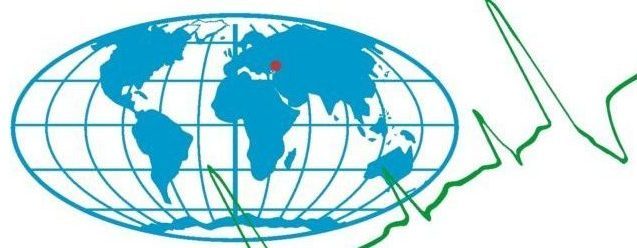Y.E. Shishkin, A.V. Skatkov
Institute of Natural and Technical Systems, RF, Sevastopol, Lenin St., 28
E-mail: iurii.e.shishkin@gmail.com
DOI: 10.33075/2220-5861-2023-4-112-123
UDC 681.3
EDN: https://elibrary.ru/speyxa
Abstract:
The paper addresses the application of simulation modeling and mathematical methods to assist decision-making in selecting the type of primary sensor, considering its non-linear error characteristics. The approach integrates algorithmic solutions based on simulation modeling and a mathematical model of integer-type Boolean multi-criteria optimization problems. The solution aims to formalize the procedures for creating optimal switching models and measurement scales that minimize measurement error as a non-linear function across the scale, under conditions of both high and low intensities of random noise, while ensuring minimal loss of accuracy.
In modern environmental monitoring systems, a systemic approach to the selection of the primary sensor type to achieve the required accuracy is crucial. The paper examines the issue of measurement errors as a non-linear function relative to the chosen scale, which significantly depends on the type of primary sensor and the upper limit of this scale. A dual methodological approach is proposed, combining algorithmic solutions based on simulation modeling and a mathematical model based on methods for solving integer-type Boolean multi-criteria optimization problems.
Experimental confirmation suggests that simple quality measurement criterion comparisons become insufficiently effective in noisy conditions, prompting the use of penalty functions for more accurate consideration of non-linear error. The results are applicable across various domains where measurement precision and reliability are crucial, such as technology, engineering, medicine, and natural-technical systems.
Keywords: measurement scale selection, simulation modeling, algorithmic solution, mathematical optimization model, multi-criteria optimization problem.
REFERENCES
- Sizov I.I., Markoliya A.I., and Kenigsberger G.V. Opyt gidroakusticheskogo monitoringu u kavkazskogo poberezh’ya Chernogo morya (Experience in hydroacoustic monitoring off the coast of the Black Sea) // Metrologiya gidroakusticheskikh izmereniy. Materialy Vserossiyskoy nauchno-tekhnicheskoy konferentsii, 2013, pp. 218–228.
- Dulov V.A., Yurovskaya M.V., and Kozlov I.E. Pribrezhnaya zona Sevastopolya na sputnikovykh snimkakh vysokogo razresheniya (The coastal zone of Sevastopol in high-resolution satellite images) // Morskoy gidrofizicheskiy zhurnal, 2015, No. 6 (186), pp. 43–60.
- Shishkin Yu.E. Obnaruzheniye neodnorodnostey i anomalii dannykh monitoringu morskoy sredy metodami veyvlet-analiza (Detection of heterogeneities and anomalies in marine environment monitoring data using wavelet analysis) // Sistemy kontrolya okruzhayushchey sredy – 2021. Tezisy dokladov Mezhdunarodnoy nauchno-prakticheskoy konferentsii. Sevastopol, 2021, P. 48.
- Kenigsberger G.V., Malysh’ev K.I., and Markoliya A.I. K koncepcii akusticheskogo monitoringu Chernogo morya (On the concept of acoustic monitoring of the Black Sea) // Trudy nauchno-prakticheskoy konferentsii “Sovremennyye tekhnologii sozdaniya sredstv nablyudeniya”. Dubna, 2006, pp. 62–69.
- Belyaev A.M., Belyakov V.V., and Beresnev P.O. Mobil’nyy robototekhnicheskiy kompleks dlya monitoringu pribrezhnoy zony (Mobile robotic complex for monitoring the coastal zone) // Ekologicheskiye sistemy i pribory, 2016, No. 8, pp. 3–10.
- Shishkin Yu.E. and Skatkov A.V. Intellektual’naya sistema adaptivnogo vybora skenariyev parametricheskogo obnaruzheniya divergentsiy dannykh monitoringu (Intelligent system for adaptive selection of scenarios for parametric detection of monitoring data divergences) // Sistemy kontrolya okruzhayushchey sredy, 2019, No. 2 (36), pp. 37–42. DOI: 10.33075/2220-5861-2019-2-37-42
- Bezuglov D.A. and Yukhnov V.I. Nelineynyye preobrazovaniya metrologicheskikh kharakteristik avtonomnykh sredstv izmereniy (Nonlinear transformations of metrological characteristics of autonomous measuring instruments) // Nauchnyy al’manakh, 2015, No. 10-3 (12), pp. 36–38.
- Skatkov A.V., Bryukhovetskiy A.A., and Moiseev D.V. Diskriminantnyy podkhod k obnaruzheniyu anomalii s ispol’zovaniyem markovskikh posledovatel’nostey (Discriminant approach to anomaly detection using Markov sequences) // Sistemy kontrolya okruzhayushchey sredy, 2019. No. 4 (38). pp. 43–49. DOI: 10.33075/2220-5861-2019-4-43-49
- Krevchenko Yu.R. Osnovy proektirovaniya priborov i sistem. Novocherkassk, 2006, 72 p.
- Tkhishev A.N., Gorshkov P.S., and Golovkin A.P. Informatsionnaya bezopasnost’ v mobil’nykh modularnykh izmeritel’nykh kompleksakh (Information security in mobile modular measuring complexes) // Nauchnyy vestnik Moskovskogo gosudarstvennogo tekhnicheskogo universiteta grazhdanskoy aviatsii, 2017, Vol. 20, No. 6, pp. 99–110.
- Grubo E.O. and Korolev P.G. Metodika rascheta metrologicheskogo resursa izmeritelnogo kanala dlya sredstv izmereniy s avtomaticheskoy korrektsiyey (Methodology for calculating the metrological resource of the measuring channel for measuring instruments with automatic correction) // Sbornik dokladov 63-y Nauchno-tekhnicheskoy konferentsii professorso-prepodavatel’skogo sostava universiteta. SPb., 2010, pp. 228–233.
- 12. Skatkov A.V., Bryukhovetskiy A.A., and Moiseev D.V. Mera Kul’baka v zadachakh dinamicheskoy klasterrizatsii nablyudeniy sostoyniya okruzhayushchey sredy (Kulback measure in problems of dynamic clustering of environmental state observations) // Sistemy kontrolya okruzhayushchey sredy, 2019, No. 3 (37), pp. 35–38. DOI: 10.33075/2220-5861-2019-3-35-38
- Yefremov L.V. Zapas metrologicheskoy nadezhnosti kak kriteriy otsenki ispravnosti sredstv izmereniy (Metrological reliability margin as a criterion for assessing the correctness of measuring instruments) // Izvestiya vuzov. Priborostroeniye, 2010, Vol. 53, No. 7, pp. 51–53.
- 14. Severtsev N.A., Betzkov A.V., and Darina A.N. Metody i modeli sozdaniya avtomatizirovannykh sredstv kontrolya dlya povysheniya bezopasnosti funktsionirovaniya tekhnicheskikh sistem (Methods and models for creating automated monitoring tools to improve the safety of technical systems) // Nadezhnost’ i kachestvo slozhnykh system, 2019, No. 2 (26), pp. 19–26.
- Nikitin V.A. and Boyko S.V. Metody i sredstva izmereniy, ispytaniy i kontrolya. Uchebnoye posobiye 2-ye izd. pererab. i dop. Orenburg GOU OGU, 2004, 462 p.
- Danilov A.A. and Sputnova D.V. Analiz modeleiy opisaniya nestabil’nosti sredstv izmereniy (Analysis of models describing the instability of measuring instruments) // 175 let VNIIM im. D. I. Mendeleyeva i Natsional’noy sisteme obespecheniya edinstva izmereniy: sb. dokl. Mezhdunar. nauch.-prakt. konf. SPb., 2017, P. 49.
- Akimov V.A., Bykov A.A., and Schetinin E.Yu. Vvedeniye v statistiku ekstremal’nykh znachiy i yeyo primeneniya. Moskva, 2009, 536 p.
- Bezuglov D.A, and Yukhnov V.I. Nelineynyye preobrazovaniya metrologicheskikh kharakteristik avtonomnykh sredstv izmereniy (Nonlinear transformations of metrological characteristics of autonomous measuring instruments) // Fundamental’nyye issledovaniya, 2015, No. 11-2, pp. 232–236.
- Bezuglov D.A. and Pomortsev P.M. Avtonomnyye sredstva izmereniy: monografiya; Rostovskaya akad. servisa (fil.), Yuzhno-rossiyskiy gos. un-t ekonomiki i servisa. Rostov-na-Donu, 2007, 168 p.
- Yukhnov V.I. Primeneniye teorii markovskikh protsessov v metrologii (Application of the theory of Markov processes in metrology) // Vestnik nauchnykh konferentsiy, 2017, No. 1-4 (17), pp. 120–122.
- GOST 34100.3-2017/ISO/IEC Guide 98-3:2008. Neopredelennost izmereniya. Rukovodstvo po vyrazheniyu neopredelennosti izmereniya. (Measurement uncertainty. Guide to the expression of measurement uncertainty) 2017-07-14. M.: Standart inform, 2008. 112 p.
![]()
